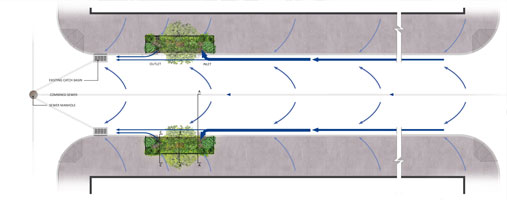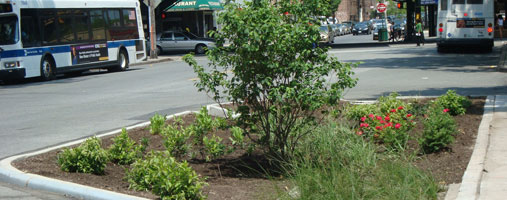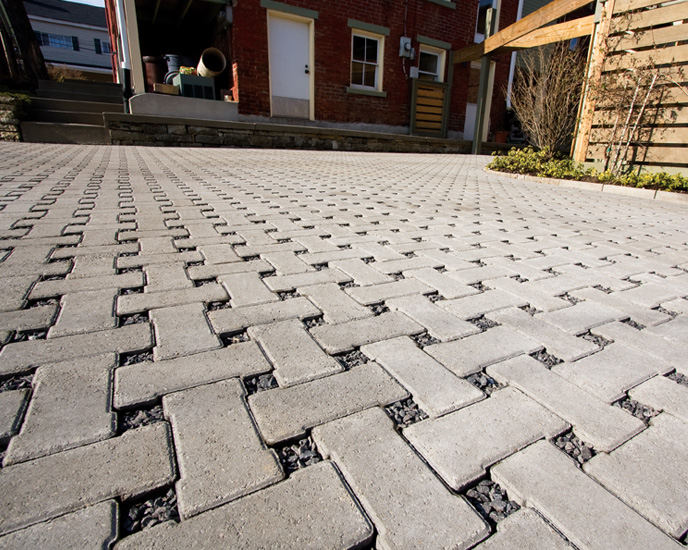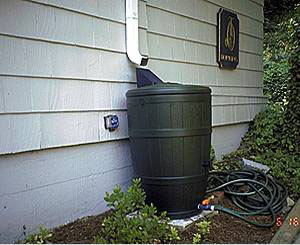A Few Types of Green Infrastructure and how they help
Right-of-way Bioswales

Storm water Greenstreets
Much like ROW bioswales, Storm water Greenstreets are planted areas designed to collect and manage stormwater runoff. They are generally constructed in the roadway and are bigger than ROW Bioswales with varying soil depths, lengths, and witdths.

Permeable Paving
Not all green infrastructure has to involve plants. Permeable paving is made of a range of materials, such as porous concrete. This allows water to seep in between the paving materials and be absorbed into the ground. It can be used as a replacement for traditional impermeable concrete or asphalt. In addition to reducing runoff, this effectively traps suspended solids and filters pollutants from the water.
Cisterns and Rain barrels
Cisterns and Rain barrels are a couple of the most basic types of green infrastructure. They Manage storm water run off and can help conserve fresh water by watering gardens. Cisterns are often larger than rain barrels and can be located underground, at ground level, or on an elevated stand. Rain barrels are connected to the downspout of a roof and capture the storm water for watering plants and other landscaping uses.



No comments:
Post a Comment